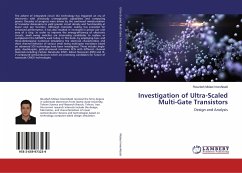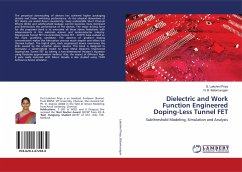Although CMOS technology will still be in a near future the principal material for all electronic manifacturers, in recent years new discoveries have catalyzed research interest in order to overcome the physical limitations of silicon. Graphene is undoubtedly one of the most interesting of these, combining nanometric thickness, atomic width and a very high conductivity. Unfortunately, the absence of an energy gap between the valence band and the conduction band makes the material not optimal for digital applications. The purpose of this work is to evaluate the possible solutions to the problem by means of chemical functionalization and doping in graphene nanoribbons. The book starts with a wide description of the calculation methodology, the tight-binding method with the aid of the software package Gaussian 03, and the application of this technique to the case of an infinite plane of graphene, analyzing all the necessary steps to realize a transistor in graphene useful for digital applications. The complete simulation of a FET in graphene is therefore showed, underlying the importance of doping or functionalization for this material.








